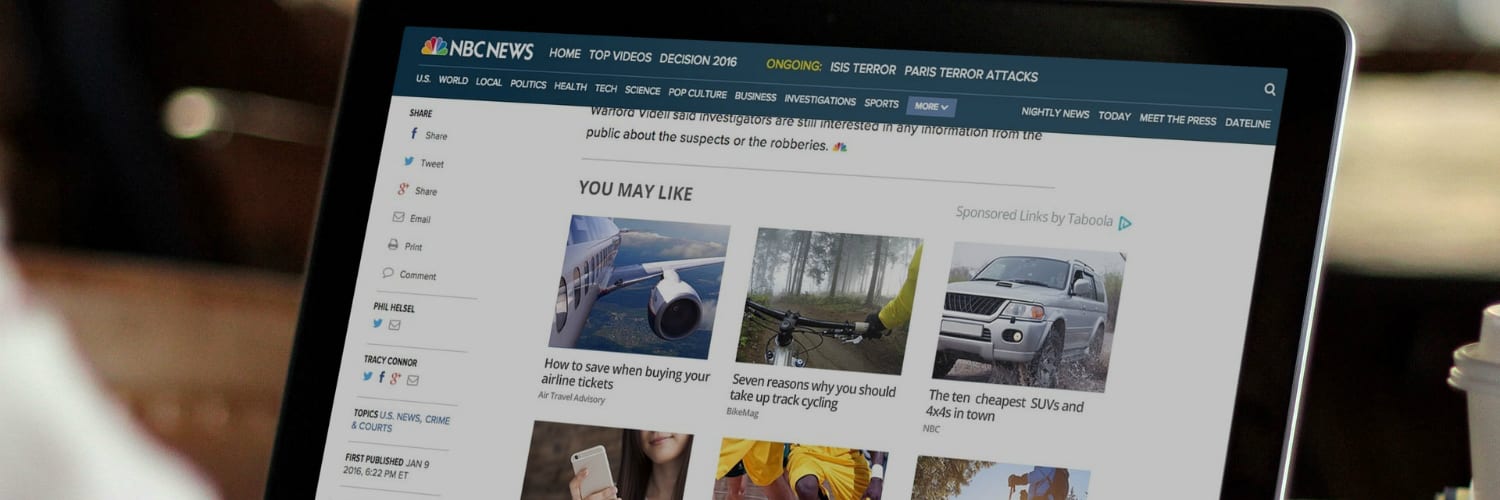If you have a million dollars and you want to advertise your brand, get value for your buck, and make sure your brand stays safe—what do you do? Who gets your money?
A recent focus on fake news, including incidents where ads have appeared next to racy or offensive content, has made advertisers and agencies cautious—rightfully so—and caused them to rethink their strategy moving forward with every single partner. Nobody is immune from answering the question, “What are you doing to protect us?”
Digital advertising has done a lot of good for marketers. It’s measurable, targeting is advanced, and there is scale. On the other hand, it’s a massive market with millions of sites where your ads can appear—which can feel a bit like the wild wild west. It’s complicated and is littered with jargon and terminology most people either don’t truly get or (quite frankly) care about.
Compare that to buying TV advertising—it’s very clear who you can buy it from, and what you’re going to get. There are three primary places to advertise online — Google and Facebook, which together, take about two-thirds of the entire online advertising market, and then there is the “open web,” comprised of big and small websites—aka ‘the rest of us’.
At Taboola, we only operate within the “open web,” working with some of the most innovative and meaningful journalistic websites in the world—sites like NBCNews, AOL, Bloomberg, USA Today, The Independent, Ströer, Yahoo Japan, and others.
This post shares some of our work on brand safety, as well as the reason I think this saga will ultimately (and actually) benefit brands, publishers, journalism and the open web all together in a meaningful way. Tomorrow will be better than today.
What’s Safe and What’s Not?
There are three types of issues brands have told us that they care about when it comes to brand safety:
- Racy Content: brands don’t want to be next to racy items (a la Bikini image)
- Inflammatory Content: some brands may not want to be associated with certain political content, inflammatory headlines, negative news, etc.
- Illegal Content: brands don’t want to be next to illegal items such as terror, gambling in some geographies, nudity, etc.
Digital advertisers often seek to target a specific audience for better campaign performance using programmatic advertising. For a while the process seemed flawless, pay only when the user is someone whom you’d like to show an ad and feel certain they want to engage. Recently there has been news about the concern that brands, such as Jaguar and others, are concerned about reaching target users, but in an environment, they don’t feel comfortable with.
Programmatic is on its way up, don’t get me wrong, mainly because it offers a very efficient way for brands to achieve their goals (“pipes”)—but I expect more discussions around how scale and efficiency can be achieved, leveraging programmatic, while brands ensure safety.
Having Your Sponsored Message on CNBC, AOL, MSN, Weather Channel, and others is Safe, Scalable and Awesome.
Here is the part that I’m really excited about. If you give advertisers the opportunity to run their content, videos, products and services adjacent to the most amazing editorial content out there, on sites we all love, using formats advertisers appreciate like native or video, and leverage data they’ve become comfortable with on social and search—it is safe, really great for the brand, and great for journalism.
Here is how we make sure brands run safely with us:
- Full transparency: When you run a campaign with Taboola, you have access to full transparency. We show you each and every site on which your content is shown. For whatever it’s worth, our transparency goes both ways—publishers also gain transparency as they see every advertiser that has ever been recommended on their site.
- TAG: We’re in the process of certification with The Trustworthy Accountability Group (TAG) to eliminate fraudulent traffic, combat malware, fight ad-supported Internet piracy to promote brand integrity, and to promote brand safety through greater transparency.
- Strong publisher partnerships: Our direct relationships with top publishers create a consistent and safe environment for brands—they know exactly who we work with. This offers reassurance to leading programmatic companies, such as The Trade Desk and Criteo whose clients are not only appearing in safe environments on premium publishers sites, adjacent to high-quality content, but they also enjoy the efficiency of programmatic buying.
- Direct control over campaign placement: If there happens to be a certain publication, category or topic you don’t want to run content alongside, we have ‘approved lists’ and ‘disapproved list’ options, as well keyword targeting for brands seeking to appear, or run campaigns on certain sites and topics they aspire to be associated with.
- Negative keyword targeting: Essentially, this is the opposite of the previous option. Brands are able to take advantage of our ability to support negative keyword targeting. These prevent campaigns from being surfaced on a page that includes a certain topic that the brand doesn’t want to be associated with.
- Third-party verification: Taboola allows advertisers to use their existing relationships with MOAT, Integral Ad Science, and DoubleVerify in order to run brand-safety reports for their Taboola campaigns.
This is not the end of our brand safety mission—we’re hard at work innovating for the better, and we’re fortunate to work with some of the most incredible publishers and brands out there, who are willing to share their thoughts on this topic, and together allow us to strategize on ways we can be most helpful in protecting and serving them as premium brands.
These are tricky times, as everybody—rightfully so—is asking themselves, “Who can I scale with, safely?”
This is an incredible opportunity for us to both drive safety for top brands’ campaigns as an alternative to social and search budgets, and support top-notch journalism and storytelling that we all love and want to remain strong and independent in the future.
I hope this is helpful. We care, and are open to any suggestions you have for us.

